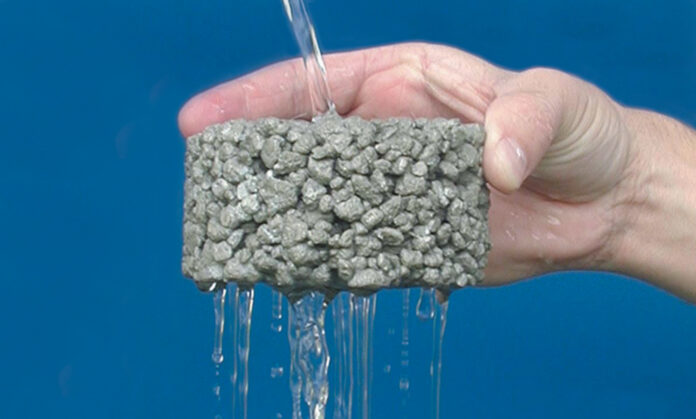Sustainable Drainage Systems (SuDS), incorporating concrete-based solutions such as permeable paving and pervious concrete, now offer a cost-effective way to manage surface water through a process that mimics natural drainage, and at the same time helps prevent public stormwater networks from being overloaded.
As urban development increases, so too does the potential for flooding from surface water and overburdened drainage systems.
This is accentuated during severe storms, such as those recently experienced across the North Island, in particular Cyclone Gabrielle.
With extreme weather events predicted to become more common as the effects of climate change intensify, effective management of surface water as part of more resilient infrastructure is now a priority for towns and cities, one which SuDS can play an important role in addressing.
What are SuDS?
The UK-based organisation Interpave describes SuDS as the management of surface water by attenuation and filtration, with the aim of replicating greenfield conditions with natural losses and reduced discharge rates.
As a design philosophy, SuDS uses different techniques in a sequence, each delivering all three of the attributes below wherever possible.
• Quantity — minimising water run-off and reducing flood risks.
• Quality — removing pollutants.
• Amenity — adding societal and biodiversity benefits.
SuDS also stresses the importance of linking surface water management and development planning from the very start to:
• create chances for using space in a multi-functional way,
• enable water storage and conveyance zones to form part of the development’s character, and
• provide the greatest opportunity for the drainage system to deliver multiple planning and environmental benefits.
Source control
A key element of SuDS is permeable paving which allows water to pass through to the underlying sub-base via joint filling material in gaps between each block.
Similarly, pervious concrete enables the same process to occur, but via a network of interconnected voids created by the absence of fines (sand) in the concrete.
SuDS can allow all the water falling onto the pavement to infiltrate down through the constructed layers below and, eventually, into the subgrade.
Alternatively, SuDS can allow partial or no infiltration of the water into the subgrade. This depends on ground conditions and/or slope, as well as if the captured water is required for a purpose, such as irrigation.
The excess water is channelled to other drainage devices, such as swales, ponds, watercourses, or sewers.
Both these concrete-based solutions deal with surface water close to where rain hits the ground, which is known as “source control”, and is key to SuDS. It also reduces the peak rate, total volume and frequency of run-off.
They help to replicate greenfield run-off characteristics from development sites, particularly relevant on high-density schemes.
In fact, they can handle run-off from roof drainage and adjacent impermeable surfaces, as well as rain falling on the permeable/pervious area.
Both concrete block permeable paving and pervious concrete can also be effective at removing pollutants from run-off to improve water quality.
Moving forward
Concrete masonry suppliers and ready mixed concrete producers across New Zealand have a range of products that consultants can utilise in SuDS, whether that be for a paved courtyard or a car parking zone.
Decision makers involved in planning, design and construction should look seriously at SuDS as a step change in the holistic management of surface water that will ensure a more sustainable built environment for urban areas.




